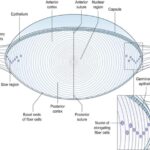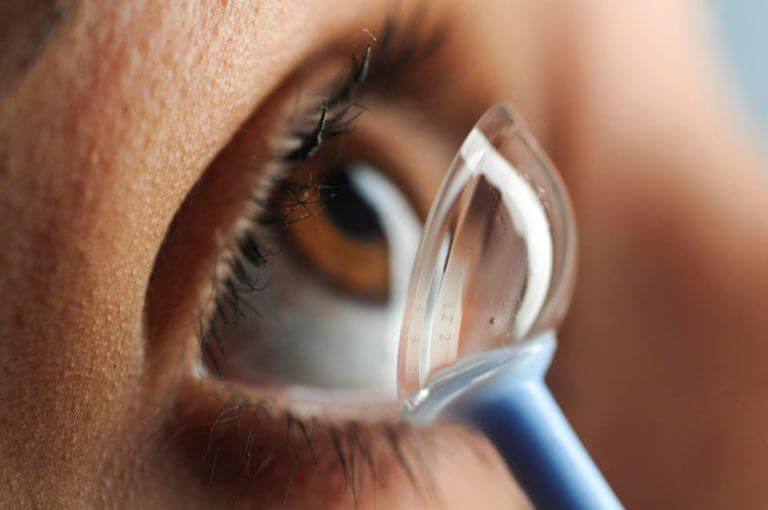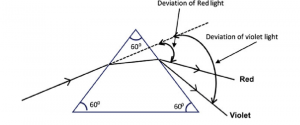HOW AGE EFFECTS YOUR EYES
Aging is an inevitable aspect of life that brings about numerous changes in our bodies, including our eyes. Understanding how and why your
eyes change with age can help you better prepare and manage these changes effectively. We’ll explore the various aspects of how aging
impacts eye health and what measures can be taken to maintain your vision as you grow older. Our eyes, like the rest of our bodies, undergo changes that can significantly impact our vision and overall eye health. These changes, collectively known as age-related eye conditions, arise from both
natural aging processes and external factors. Understanding how age affects our eyes is crucial for recognizing potential vision challenges
early and taking proactive steps to maintain optimal eye health throughout our lives. From common conditions like presbyopia to more
serious concerns such as cataracts and age-related macular degeneration (AMD), each stage of life brings unique considerations
and potential challenges for our eyesight. Exploring these effects can illuminate the importance of regular eye care and proactive measures to support healthy vision as we age.
Understanding the Eye’s Anatomy:
The eye is a complex organ with several parts that work together to provide vision. Key parts affected by aging include the lens, retina, and the optic nerve. These components are essential for focus, color differentiation, and transmitting visual information to the brain,
respectively.
Understanding how age affects your eyes begins with grasping the intricate anatomy that facilitates vision. The eye is a complex organ composed of several key structures:
1. Cornea: The transparent, dome-shaped surface that covers the front of the eye. It helps to focus light into the eye.
2. Lens: Located behind the iris (colored part of the eye), the lens adjusts its shape to focus light onto the retina.
3. Retina: The light-sensitive tissue lining the back of the eye. It contains photoreceptor cells (rods and cones) that convert light into electrical signals.
4. Macula: A small, specialized area in the center of the retina responsible for sharp central vision. It allows us to see fine details clearly.
5. Optic Nerve: Transmits electrical signals from the retina to the brain, where they are interpreted as visual images. Throughout life, these components undergo changes that can affect vision:
Lens Changes: With age, the lens becomes less flexible and less able to change shape (accommodate), leading to presbyopia. This
makes it harder to focus on close objects and typically becomes noticeable around age 40.
Pupil Changes: The muscles that control pupil size and reaction to light weaken over time, causing the pupil to become smaller and less responsive. This reduces the eye is ability to adjust to changes in light levels, especially in dim lighting conditions.
Tear Production: Tear production tends to decrease with age, leading to dry eyes. This can cause discomfort, irritation, and
blurred vision.
Retinal Changes: The retina may undergo structural changes, and the number of photoreceptor cells may decrease with age. These changes can affect color perception, night vision, and overall visual acuity.
Macular Changes: The macula can be affected by conditions like age-related macular degeneration (AMD), which is more common in older adults. AMD can impair central vision, making it difficult to see fine details.
Increased Risk of Eye Diseases: Age is a significant risk factor for conditions such as cataracts, glaucoma, and AMD. These diseases can lead to vision loss if not detected and treated early.
Common Age-Related Eye Changes: As per age, several changes can occur: Gradual Loss of Focus: The lens becomes less flexible, making it
harder to focus on close objects—a condition known as presbyopia. Changes in Color Perception: Aging can cause a slight yellowing of the lens, affecting how colors are perceived. Decreased Tear Production: With age, tear production diminishes, causing dry eyes and discomfort.
Age-Related Eye Diseases:
Several eye conditions are more prevalent in the elderly:
Cataracts
Age-related Macular Degeneration (AMD)
Diabetic Retinopathy
Glaucoma
Cataracts Detailed
Cataracts occur when the lens of the eye becomes cloudy. Symptoms include blurred vision, glare, and difficulty seeing at night. Treatment
typically involves surgical replacement of the lens. Age-Related Macular Degeneration (AMD) Explained AMD affects the macula, the part of the retina responsible for clear central vision. It comes in two types—dry and wet—and leads to progressive vision loss. While no cure exists, treatments such as injections and laser therapy can slow progression. Diabetic Retinopathy Overview This condition is a complication of diabetes that affects the retina, leading to potential blindness. Management of diabetes is crucial for prevention and control.
Glaucoma and Aging Glaucoma is marked by increased pressure in the eye that can damage the optic nerve. Early detection and treatment are vital to prevent serious vision loss.
Preventive Measures:
Maintaining eye health as you age involves:
Regular Eye Exams: Essential for early detection of problems.
Nutrition: Consumption of nutrients like vitamins C and E, and omega-3 fatty acids.
UV Protection: Wearing sunglasses to protect against harmful UV rays.
Technological Aids and Modifications
As vision changes, certain aids like prescription glasses or adjustments to screen brightness can help maintain quality of life.
Lifestyle Adjustments for Better Eye Health
Factors like smoking cessation, regular exercise, and managing blood sugar levels impact eye health significantly.
Psychological Effects of Vision Loss
Vision loss can lead to depression and anxiety; support groups and
therapy can help manage these psychological effects.
Navigating the Healthcare System
Understanding what resources are available and how to access
them can ease the burden of managing age-related eye
conditions.
Future of Eye Care
Innovations in eye care promise better treatment and preventive
measures. Keeping informed can help you take advantage of
emerging technologies.
Conclusion:
Aging and eye health are closely linked, with various conditions affecting the elderly. Comprehensive care, lifestyle adjustments, and
regular check-ups can help mitigate the impact of age-related eye changes. aging brings about significant changes in the eyes that can impact vision
and overall eye health. From the gradual loss of flexibility in the lens causing presbyopia to the increased risk of conditions like cataracts,
glaucoma, and age-related macular degeneration (AMD), understanding how age affects the eyes is crucial for maintaining
optimal vision throughout life. These age-related changes necessitate proactive measures such as regular eye exams to detect and address issues early. Early intervention can often prevent or delay vision loss associated with conditions like cataracts and AMD. Additionally, lifestyle factors such as maintaining a balanced diet rich in eye-friendly nutrients, protecting the eyes from UV radiation with sunglasses, and avoiding smoking can play a crucial role in preserving eye health as we age. Furthermore, staying informed about age-related eye changes empowers individuals to recognize symptoms, seek appropriate care, and adopt habits that promote long-term eye health. By taking these proactive steps, individuals can enjoy clear vision and maintain their quality of life as they navigate the natural aging process. Ultimately, while age brings inevitable changes to our eyes, proactive eye care and healthy lifestyle choices can significantly mitigate these effects, allowing us to continue seeing the world clearly and comfortably for years to come.










